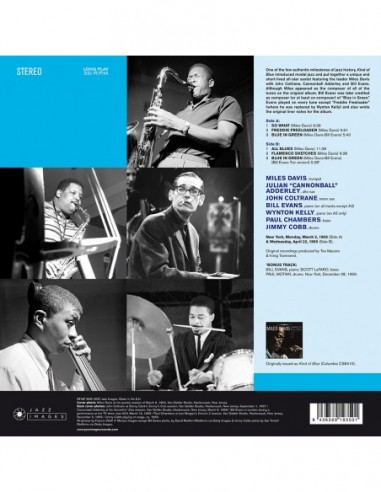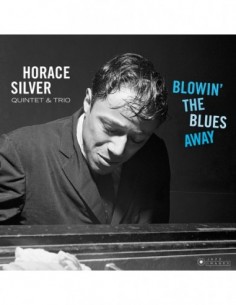Kind of Blue (Gatefold)
Miles Davis• THE FRANCIS WOLFF COLLECTION
• LIMITED EDITION
• DELUXE GATEFOLD SLEEVE
• 180 GRAM AUDIOPHILE VINYL
• INCLUDES 1 BONUS TRACK
One of the few authentic milestones of jazz history, Kind of Blue introduced modal jazz and put together a unique and short-lived all-star sextet featuring the leader Miles Davis with John Coltrane, Cannonball Adderley and Bill Evans. Although Miles appeared as the composer of all of the tunes on the original album, Bill Evans was later credited as composer (or at least co-composer) of “Blue in Green.” Evans played on every tune except “Freddie Freeloader” (where he was replaced by Wynton Kelly) and also wrote the original liner notes for the album.
PERSONNEL:
- MILES DAVIS, trumpet
- JULIAN “CANNONBALL”
- ADDERLEY, alto sax
- JOHN COLTRANE, tenor sax
- BILL EVANS, piano (on all tracks except A2)
- WYNTON KELLY, piano (on A2 only)
- PAUL CHAMBERS, bass
- JIMMY COBB, drums
New York, Monday, March 2, 1959 (Side A) & Wednesday, April 22, 1959 (Side B).
- (*) BONUS TRACK:
- BILL EVANS, piano; SCOTT LaFARO, bass;
- PAUL MOTIAN, drums. New York, December 28, 1959.
TRACKS:
- SIDE A
- 01 SO WHAT
- 02 FREDDIE FREELOADER
- 03 BLUE IN GREEN
- SIDE B
- 01 ALL BLUES
- 02 FLAMENCO SKETCHES
- 03 BLUE IN GREEN
- Format
- LP
- Discs
- 1
- Label code
- 37147
 Cookie preferences
Cookie preferences
























































